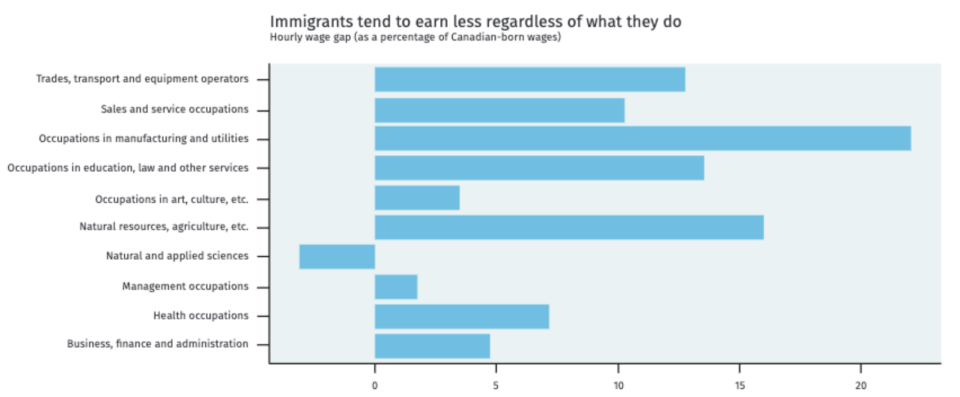Underpaid immigrants could cost the Canadian economy $50 billion

Canada does a good job attracting foreign talent, but not so much when it comes to paying them their fair share.
A new report from RBC (RY.TO) shows immigrants earn about 10 per cent less than those born in Canada. That wage gap has grown from less than 4 per cent 30 years ago.
“That’s a red flag for a country that already has the highest proportion of immigrants to total population in the G7. Immigrants make up 22% of Canada’s population now, a number that’s expected to rise to 28% by 2036,” said the report.
“The immigrant wage gap is costly. Our research suggests bringing immigrants up to the wage levels and employment of those born in Canada would produce substantial economic benefits—maybe as much as 2.5% in annual GDP, about $50 billion.”
Researchers observed the phenomenon across occupations, age, gender, and regions – with the exception of Atlantic Canada.
In March, the federal government announced a two-year extension of the Atlantic Immigration Pilot to make it easier to hire skilled labour and recent graduates to fill local vacancies.
The situation has worsened elsewhere despite immigrants being increasingly better educated. The gap for university-educated immigrants aged 45 to 54 is about 18 per cent.
Educated immigrants also aren’t finding jobs that match their education. Only 38 per cent of university-educated immigrants hold positions that require a degree, compared to 52 per cent for those born in Canada.

Meanwhile, the federal Liberals have pledged to increase the country’s immigration intake to 350,000 by 2021.
“Given current federal plans for an increase in immigration levels, the cost is worth bearing in mind.”
It’s a much different picture when immigrants come to the country as children. Those who arrive before the age of 16 actually earn just as much, if not more, than their Canadian-born counterparts.
The report calls for better data, help for Canadian employers with assessing foreign work experience, and more government resources to help immigrations transition into the workforce. It also suggests trying to replicate Atlantic Canada’s approach across the country.
Jessy Bains is a senior reporter at Yahoo Finance Canada. Follow him on Twitter @jessysbains.
Download the Yahoo Finance app, available for Apple and Android.

 Yahoo Finance
Yahoo Finance 
